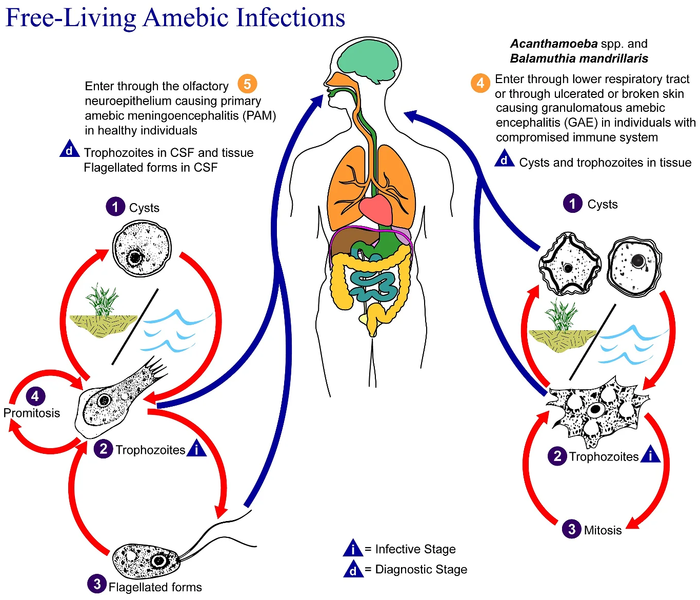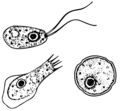Ficheiro:Free-living amebic infections.png
Aspeto

Dimensões desta antevisão: 700 × 600 píxeis. Outras resoluções: 280 × 240 píxeis | 560 × 480 píxeis | 896 × 768 píxeis | 1 195 × 1 024 píxeis | 1 365 × 1 170 píxeis.
Imagem numa resolução maior (1 365 × 1 170 píxeis, tamanho: 715 kB, tipo MIME: image/png)
Histórico do ficheiro
Clique uma data e hora para ver o ficheiro tal como ele se encontrava nessa altura.
| Data e hora | Miniatura | Dimensões | Utilizador | Comentário | |
|---|---|---|---|---|---|
| atual | 09h24min de 2 de fevereiro de 2023 |  | 1 365 × 1 170 (715 kB) | Materialscientist | https://answersingenesis.org/biology/microbiology/the-genesis-of-brain-eating-amoeba/ |
| 06h30min de 20 de julho de 2008 |  | 518 × 435 (31 kB) | Optigan13 | {{Information |Description={{en|This is an illustration of the life cycle of the parasitic agents responsible for causing “free-living” amebic infections. For a complete description of the life cycle of these parasites, select the link below the image |
Utilização local do ficheiro
Não há nenhuma página que use este ficheiro.
Utilização global do ficheiro
As seguintes wikis usam este ficheiro:
- de.wikibooks.org
- en.wiktionary.org
- fi.wikipedia.org
- fr.wikipedia.org
- gl.wikipedia.org
- hr.wikipedia.org
- is.wikipedia.org
- it.wikipedia.org
- pl.wikipedia.org
- te.wikipedia.org
- vi.wikipedia.org
- www.wikidata.org
- zh.wikipedia.org




